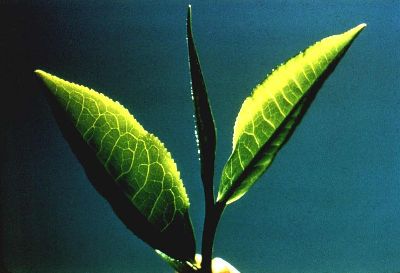Tea Plant
Classification
Domain: Eukarya
The reason Camellia sinensis is categorized in the Eukarya domain is because tea is multi-cellular, it has a true nucleus, and C. sinensis has membrane organelles.
Camellia sinensis has chloroplasts, thus it undergoes photosynthesis. In addition, there is an alternation of generations between the gametophytes and sporophyte
s.
Phylum: Angiospermae
Camellia sinensis is a flowering plant because its buds give rise to flowers. These flowers become the plant's reproductive organ, which is a main reason C. sinensis is considered an angiosperm.
Class: Magnoliopsida - Dicotyledons
Tea plants are dicots
because C. sinensis has two embryonic leaves.
In addition, all the tea's leaves have veins that
are netlike, and the root systems of C.
sinensis have a taproot (main root).
Peripheral roots grow from the main
root.
have a taproot (main root).
Peripheral roots grow from the main
root.
Order: Ericales
Tea plants have a mutualistic relationship with Glomermycota fungi. This symbiotic relationship is a key characteristic that Ericales share. Furthermore, this group is autophytic, meaning plants from this order convert organic sugars from carbon dioxide.
Camellia sinensis is an evergreen shrub and it has waxy leaves that are about two to six inches in length. The flowers are usually white and they contain a strong fragrance, so tea leaves fall into this classification.
Genus: Camellia
Tea plants fall into this classification because they grow between two and twenty meters in height. The fruit is a dry capsule and it's adapted to acidic soils. They need lots of rainfall; however, they can survive during drought. In addition, the genus Camellia can grow at a fast rate of about thirty centimeters per year.
Species: Camellia sinensis
Lastly , C. sinensis are native to Southeast Asia - to be more specific, its ancestry begins in China. The flowers are white and there are about seven to eight petals on each flower. The seeds of the plant create tea oil and tea plants thrive in tropical and subtropical regions. All these unique characteristic make up the species Camellia sinensis.
Phylogeny Trees


Now that we know the classification of Camellia sinensis, let us move forward and learn about the Life History and Reproduction of this magnificent plant.
Copyright © 2007, Design by: Sunlight webdesign